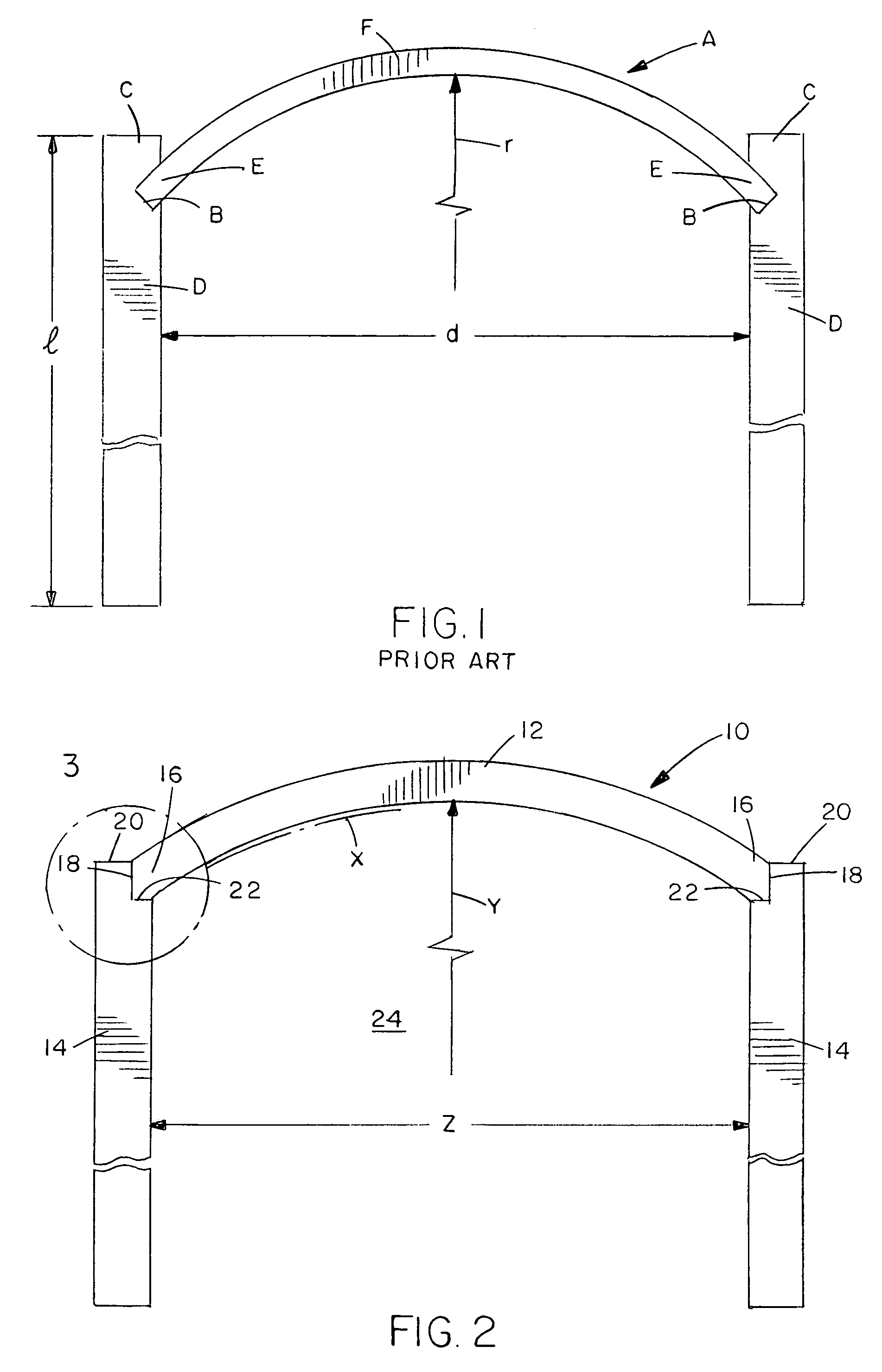Standardized arched jamb assembly and method
a technology of arched jambs and assembly methods, applied in the field of arched jambs, can solve the problems of adding additional costs, affecting the construction efficiency of arched jambs, and affecting the quality of arched jambs, and achieve the effect of simple and inexpensive tools
- Summary
- Abstract
- Description
- Claims
- Application Information
AI Technical Summary
Benefits of technology
Problems solved by technology
Method used
Image
Examples
Embodiment Construction
[0037]FIGS. 2 to 5 illustrate an arched jamb assembly according to a first embodiment of the present invention, generally designated 10. The assembly 10 basically includes an arched jamb member 12 and a pair of opposite upright jamb members 14 of wood, laminant, composite, plastic and / or combinations thereof.
[0038]The arched jamb member 12 of the assembly 10 has a pair of opposite ends 16, predetermined curvature “x” and radius of curvature “y”, and a pair of first angled cuts 18 each made on one of the opposite ends 16 of the arched jamb member 12. Each upright jamb member 14 of the assembly 10 has an upper end portion 20 and a second angled cut (or notch) 22 made in the upper end portion 20. The first angled cuts 18 of the arched jamb member 12 respectively meet and interface with the second angled cuts 22 of the upright jamb members 14 so as to assemble the arched jamb member 12 with the upright jamb members 14 to form the arched jamb assembly 10 that defines a wall opening 24 be...
PUM
 Login to View More
Login to View More Abstract
Description
Claims
Application Information
 Login to View More
Login to View More - R&D
- Intellectual Property
- Life Sciences
- Materials
- Tech Scout
- Unparalleled Data Quality
- Higher Quality Content
- 60% Fewer Hallucinations
Browse by: Latest US Patents, China's latest patents, Technical Efficacy Thesaurus, Application Domain, Technology Topic, Popular Technical Reports.
© 2025 PatSnap. All rights reserved.Legal|Privacy policy|Modern Slavery Act Transparency Statement|Sitemap|About US| Contact US: help@patsnap.com



